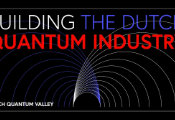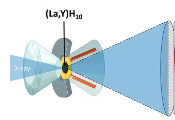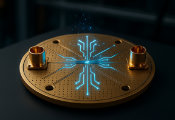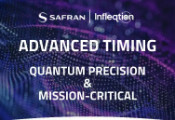Classical Optical Neural Network Exhibits ‘Quantum Speedup’
In recent years, artificial intelligence technologies, especially machine learning algorithms, have made great strides. These technologies have enabled unprecedented efficiency in tasks such as image recognition, natural language generation and processing, and object detection, but such outstanding functionality requires substantial computational power as a foundation.
Current computational resources are approaching their limit, so effectively reducing the training cost of machine learning models and improving their training efficiency is an important issue in the research field.
To address the issue, great efforts have been made in two research directions: optical neural networks and quantum neural networks. Optical neural networks utilize advanced optical manipulation methods to execute machine learning algorithms in classic optical information processing. They have unique advantages such as low energy consumption, low crosstalk, and low transmission latency. However, the current optical neural networks do not exhibit algorithmic acceleration, such as faster model convergence speed.
Quantum neural networks are neural network algorithms based on quantum computing theory. Recent research has shown that quantum neural networks can demonstrate algorithmic acceleration because of the quantum correlations. However, due to technical limitations, it is currently difficult to execute such neural network algorithms on hardware at a large scale, making it challenging for their application in practical problems faced by people at present.
In a new paper published in Light: Science & Applications, a team of scientists, led by Professor Xiangdong Zhang, from Key Laboratory of advanced optoelectronic quantum architecture and measurements of Ministry of Education; Beijing Key Laboratory of Nanophotonics & Ultrafine Optoelectronic Systems, School of Physics, Beijing Institute of Technology, China, and co-workers have developed a new type of optical neural network that can exhibit the speedup analog to a quantum neural network.
This interesting property emerges due to the introduction of classical optical correlations as the carrier of information. In fact, by using such a kind of carrier, one can mimic the way of information processing enabled by quantum computing, which has been proven by earlier work from the researchers.
Based on the property, the researchers developed the convolutional and pooling operation on the correlated optical state and established a correlated optical convolutional neural network. This optical neural network has a one-to-one correspondence with the quantum convolutional neural network. It shows the speedup in training process on learning certain datasets, and can be applied to identify the character of quantum states under a particular encoding principle.
The reported method and technique will open new avenues for realizing algorithmically enhanced optical neural networks, which will benefit information processing in the era of big data.
The basic structure of a correlated optical convolutional neural network includes four parts: the correlated light source, the convolution, the pooling, and the detections. The core processing of the correlated optical state is done by the convolution and the pooling part. Unlike classical convolutional neural networks, these two parts in the correlated convolutional optical neural network manipulate the correlation of optical states and generate the simpler correlated states by merging the beams.
"These two parts actually perform the operations analog to the quantum gates in the quantum convolutional neural networks," said the scientists. "The convolution part in our network is composed of unitary operations on the correlated optical state.
"It is like the unitary operations on the Hilbert space of qubits. The pooling part we consider is equivalent to measuring partial qubits for obtaining a sub-Hilbert space. Such a part leads to an exponential decrease in the dimension of data. Hence, the function of the two parts contributes to a faster convergence of the loss function when learning certain datasets.
"Besides, we also certify the similarity of our correlated optical convolutional neural network with the quantum convolutional neural network by performing the identification of the topological phase of quantum states. The certification is supported by both theoretical and experimental results.
"The results also indicate that the properties of quantum neural network can be realized in a more affordable way," they added.
"Despite the potential advantages of quantum neural networks, implementing them practically requires deep quantum circuits with many multi-qubit gates and complicated measurements. This necessitates significant resources to stabilize the circuits and correct errors, which is technically challenging due to the unavoidable environmental disturbances.
"A potentially better alternative is to find a system described by the same math as quantum theory and interrupted less by the environment. The proposed correlated optical neural networks serve as an example of such a system, as evidenced by the ease of element arrangements and low requirements on the circumstances in our experiments.
"Given the exponential growth of data and the scarcity of resources for high-quality computation, our approach presents a cost-effective and high-performance solution that could have widespread applications in various data science research fields."




































